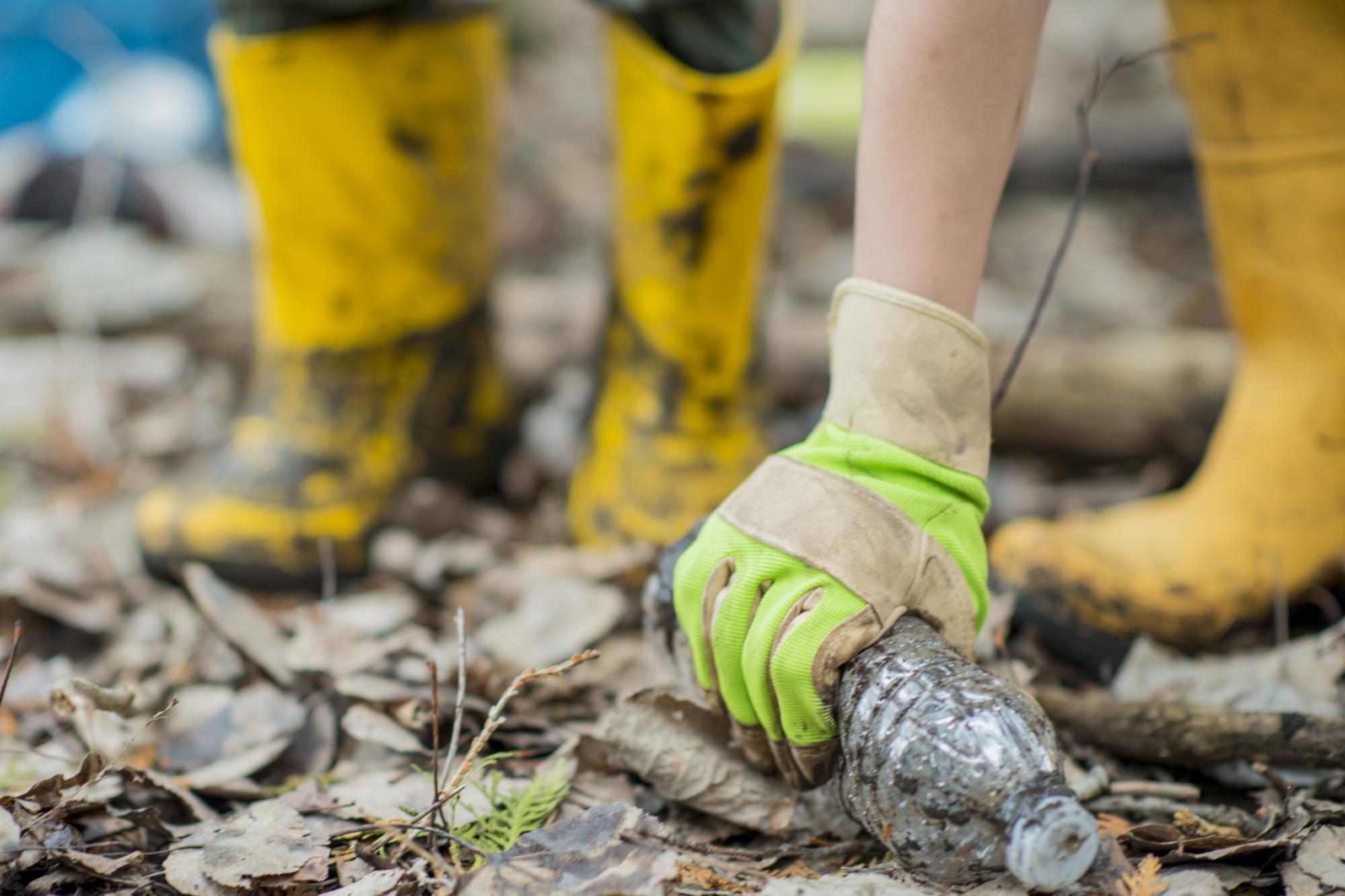
Reducing Single-Use Plastic in Your Life
By Nature's Path
When I was growing up in the 1950's, single-use plastic did not exist. My mother brought home groceries in paper sacks, which we reused as garbage bags in the kitchen trash can. Frozen vegetables (a new invention!) came in paper boxes, and fresh produce was sold loose. Meat came wrapped in paper from a butcher, and milk was delivered to the house in glass bottles with cardboard lids. Our sandwiches for lunch were wrapped in waxed paper and put into metal lunchboxes. Snacks were whole foods like carrots, apples, and homemade cookies. Dinner’s leftovers were put on a plate and covered with tin foil to be stored in the fridge.
It wasn’t until the 1960's that plastic design and production took off. But it still took 20 more years for it to infiltrate our everyday lives and destroy our environment. Shopping bags are the worst offenders. They were not widely offered in stores until 1982, but shoppers still preferred paper. The plastic bag did not come into favor with consumers until the mid-1990's. Bags are made of high-density polyethylene, which the #2 plastic that thousands of items have been packaged in since the mid-1970's. That’s when the newly introduced plastic milk jug won over consumer hearts.
I give you this bit of history to show how quickly one modern convenience has negatively affected our environment on a huge scale. By 1997, the Great Pacific Garbage Patch was already floating at sea, killing marine and bird life.
What you can do
The global plastic pollution problem will never be reversed, but you can personally strive for a more natural, plastic-free life at home. You can’t avoid plastic in phones, computers, TVs, cars, appliances, and countless other products, but you can eliminate single-use plastic from your immediate surroundings. If you have a stash of plastic shopping and produce bags, reuse them! Don’t throw them out in the name of reducing your plastic consumption. The same goes for plastic containers with lids. Reuse them until they have no life left in them. Pack lunches and leftovers in them. They are great for storing craft and sewing supplies, bathroom items, and hardware. Bring bags everywhere you shop. If you are handy, upcycle old clothes into new bags. Go to thrift stores and yard sales to find unique bags and totes. Get creative! Buy staples in bulk, since most stores have bulk bins now. Save glass jars to use as containers. Have a cashier get a tare weight on your empty jar, so you are not paying for the added weight of it. You can buy nuts, pasta, grains, beans, oil, vinegar, flour, and even sweet treats in bulk. Some stores offer shampoo and conditioner, liquid hand soap, and household cleaners, too. (Additionally there is the creation of shampoo bars to replace plastic bottles). Don’t bag your produce. Place it in your cart and pack it in your bags at the cash register. If that sounds gross, find, make, or buy small bags that you can reuse. (And wash them often!) Here are tips for storing produce at home without plastic:- Look for milk in glass bottles. Today’s cardboard containers are lined with plastic. If you have a small dairy farm near you, find out if you can buy directly from them, bringing your own containers
- Buy powdered laundry soap in a box or make your own! You can easily and inexpensively make all your household cleaners, which are always packaged in plastic
Eco-friendly dining out
- Seattle recently banned drinking straws and plastic utensils in restaurants and bars. Now other cities and businesses are beginning to follow suit. At a restaurant, refuse the straw and bring your own. Eco-friendly straws come in glass, metal, silicone, and bamboo. Bring a container for leftovers.
- For take-out, support places that don’t use Styrofoam and plastic cutlery. Carry your own containers, utensils, and cups or mugs. Ask the server to use your take-out box instead of theirs.
- Buy a reusable water bottle and refill it wherever you can. Order ice cream in a cone instead of a cup with a spoon.
- Pack your lunch or food for a road trip in reusable containers. Don’t forget waxed paper, either! It comes in rolls or sandwich size bags. You can also make beeswax food wrap.
Less plastic is more sustainable
If you want to get serious about cutting your plastic use even farther, visit My Plastic Free Life. Be aware of what’s around you and find ingenious and sustainable alternatives. It takes a little effort and a change in routine, but everyone wins. When plastic gained popularity, it replaced natural materials, such as silk, latex, rubber, and wood - things that biodegrade without harming the environment. Plastic never biodegrades. Instead it breaks up into smaller and smaller pieces called microplastics that eventually work their way into everything. That means soil, animals, water, and you. We’ve chosen plastic for its convenience, but now it’s time to suffer a little inconvenience to help clean up the planet. So take some cues from my childhood and learn to live with less plastic.Would you like to be the first to hear about our new products and more? Sign up for our Nature’s Path Newsletter.






